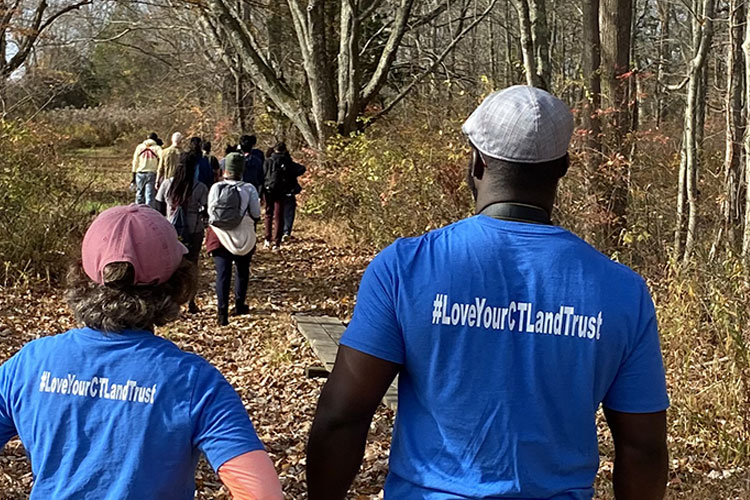Welcome to our comprehensive collection of resources on climate-smart stewardship. Here, you’ll find a diverse array of materials designed to support your journey in understanding and implementing climate-smart practices. These resources range from explanations of what climate-smart agriculture and forestry practices to planning tools like the USFS Tree Atlas and NIACS Adaptation Journal, which offer invaluable insights and guidance for effective stewardship in a changing climate. These resources can be helpful for anyone from seasoned land stewards, to new landowners, or concerned nature lovers.
If you find additional resources that are helpful to you and not located on this page, send them to rbentley@ctconservation.org to add them.
Pollinator Pathways, led by town conservation volunteers, create continuous corridors of pollinator-friendly habitats for bees, butterflies, hummingbirds, and other wildlife. The goal is to connect spaces within 750 meters, which is the average range of native bees, to ensure they have a thriving environment.
The Connecticut Invasive Plant Working Group (CIPWG) is committed to understanding and managing invasive species in Connecticut through gathering data, promoting native plant alternatives, and collaborating with experts and the public to protect the state’s ecosystems.
The following resources were provided by Lisa Hayden (New England Forestry Foundation) and Andrea Urbano (CT DEEP) at the 2023 Connecticut Land Conservation Conference. This presentation explained emerging forest stewardship, urban forestry and land management practices that are being defined, implemented and monitored for their climate benefits in Connecticut and across New England.
May and early summer is the best time of year to recognize ericaceous and other shrub species – like blueberries, laurels, and arrowood – when they are in bloom. A preponderance of flowering native shrubs warrants a concerted effort to secure an alternate management regime for those areas – not frequent close mowing. We recommend marking the limits of the shrub patches, to make them easier to avoid. If photos of a blooming shrub, including a close-up of a flower and a few leaves, are posted on the CT Botanical Society Facebook page, we may well be able to help with identification.
The Northeast Bird Habitat Conservation Initiative has announced the launch of an exciting new interactive mapping tool designed to aid northeastern conservation practitioners and organizations, including regional conservation partnerships and land trusts in advancing conservation.
CLCC and CT Farmland Trust hosted an online introduction to the FarmLink program, and how FarmLink can help match your land trust to a farmer who is interested in stewarding your agricultural lands. Topics discussed land and community benefits of leasing farmland, land trust considerations before leasing, and funding opportunities for your land trust.
This handbook was produced for New England by the Non-farming Landowner Task Force of the Land Access Project.
